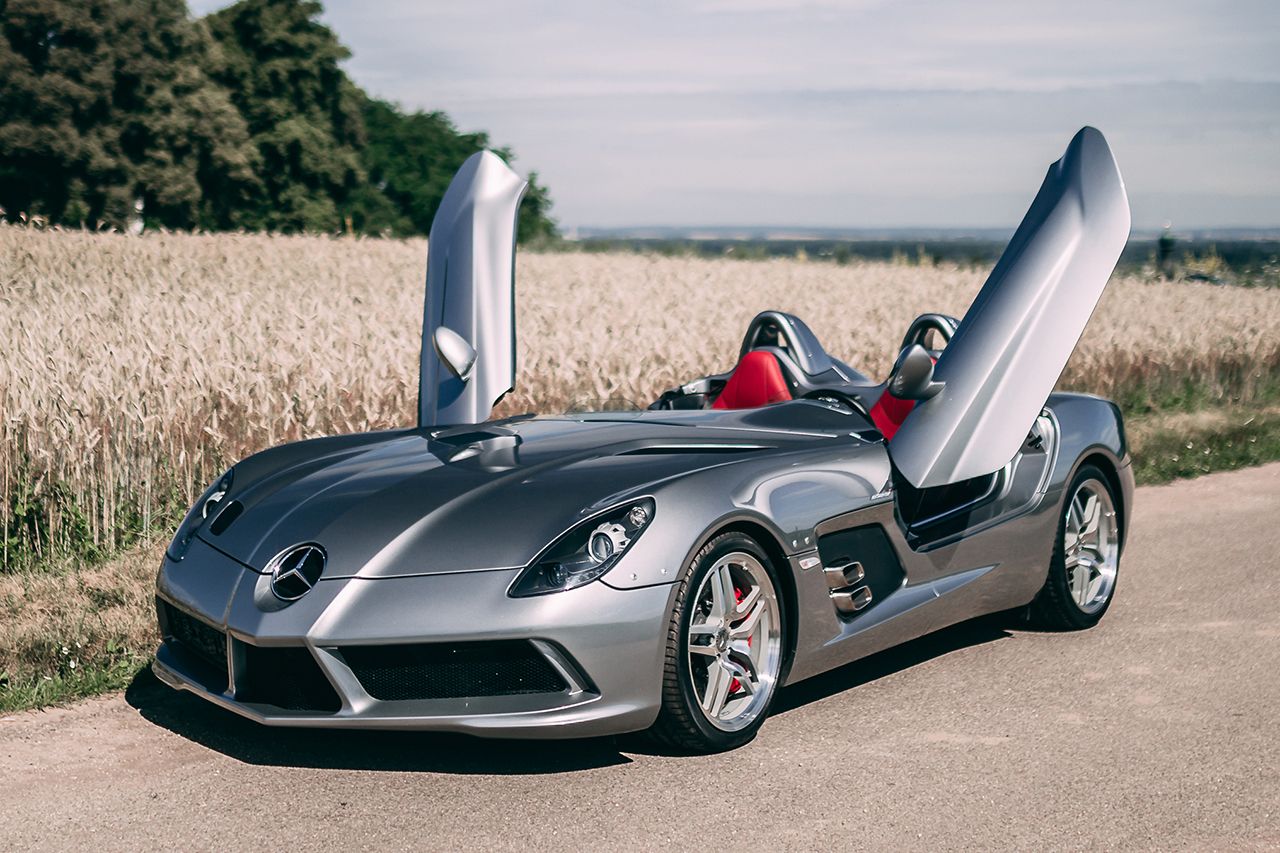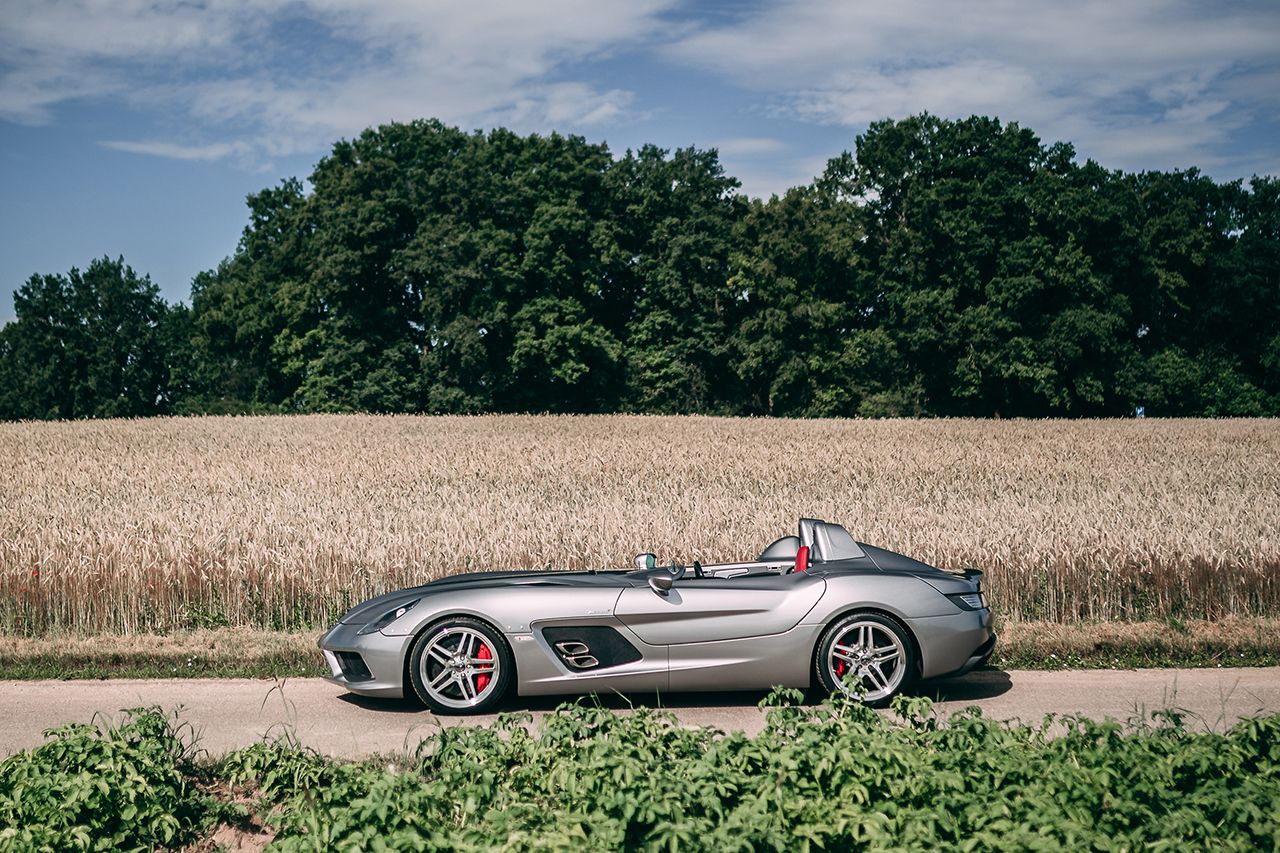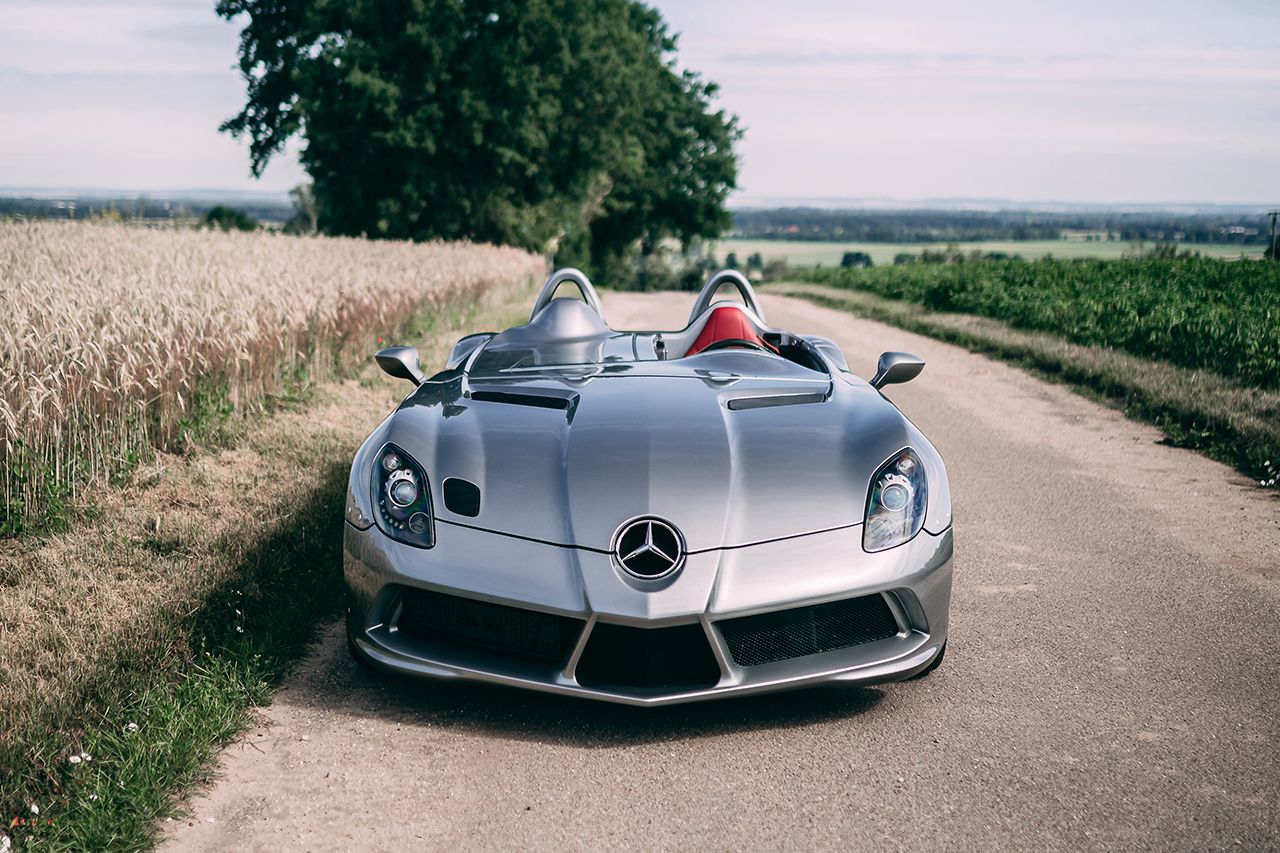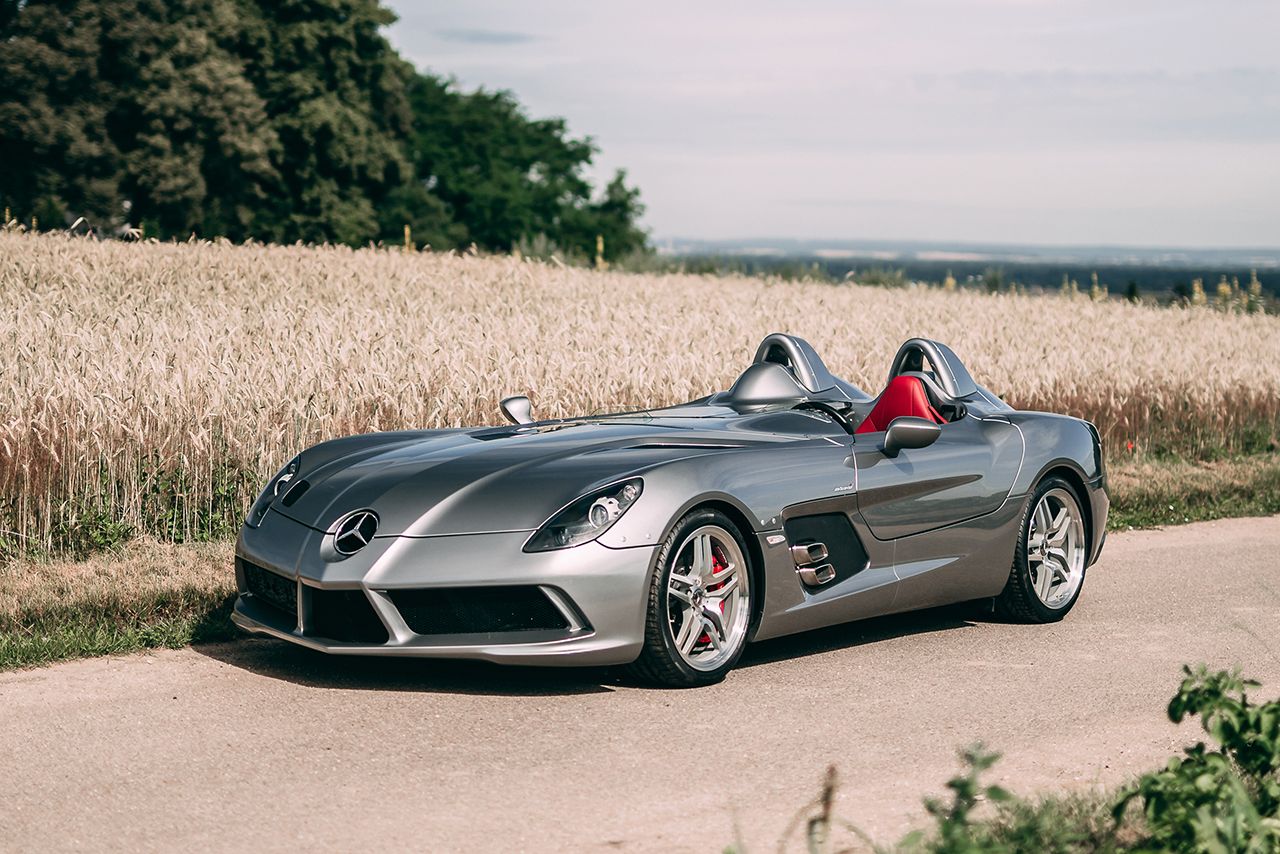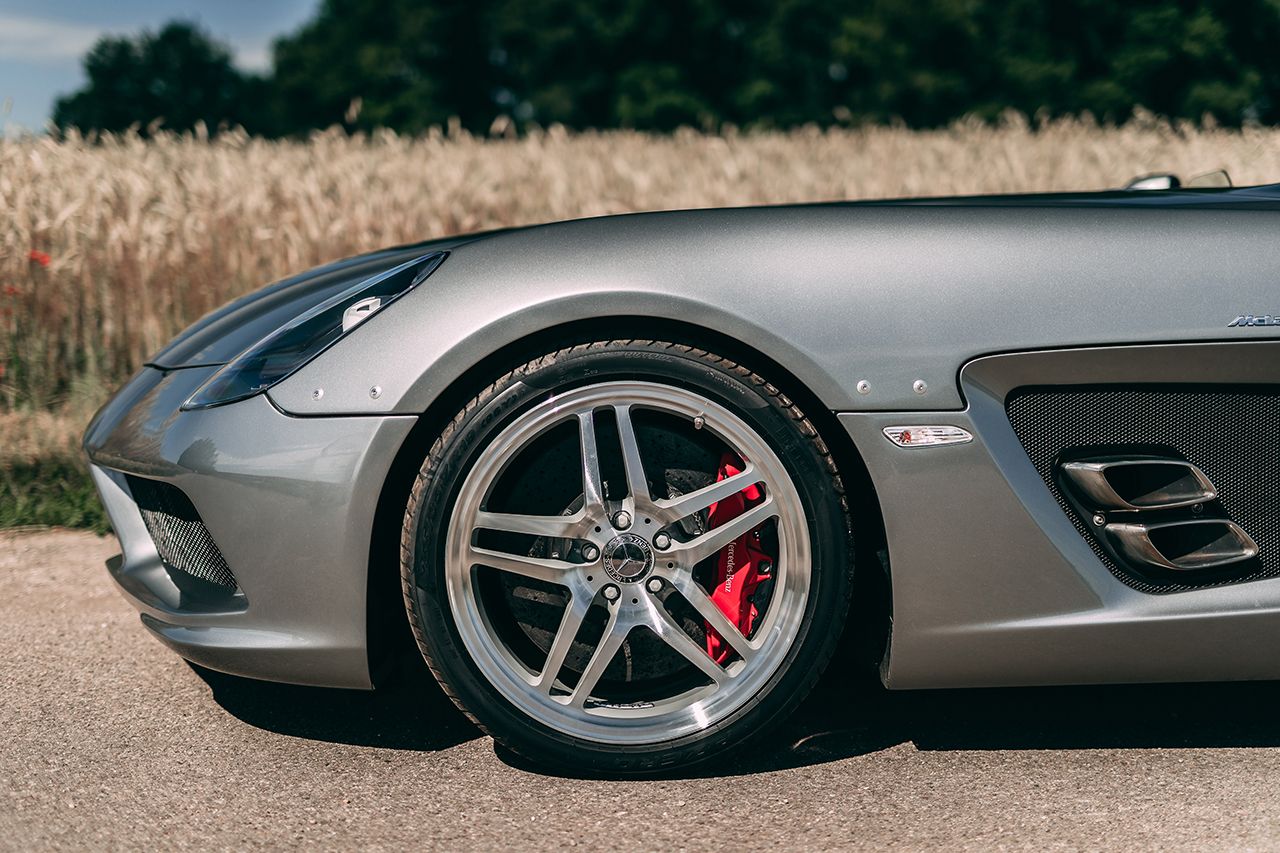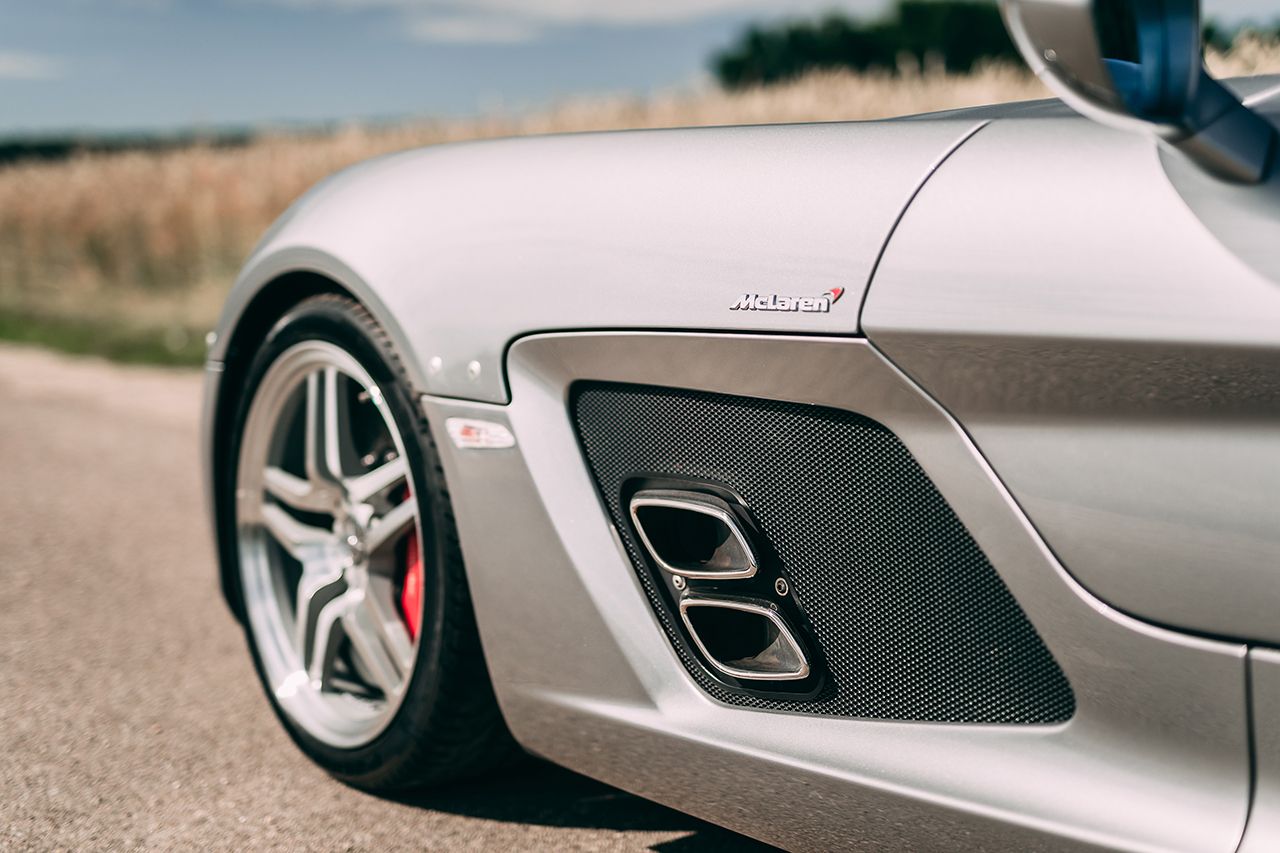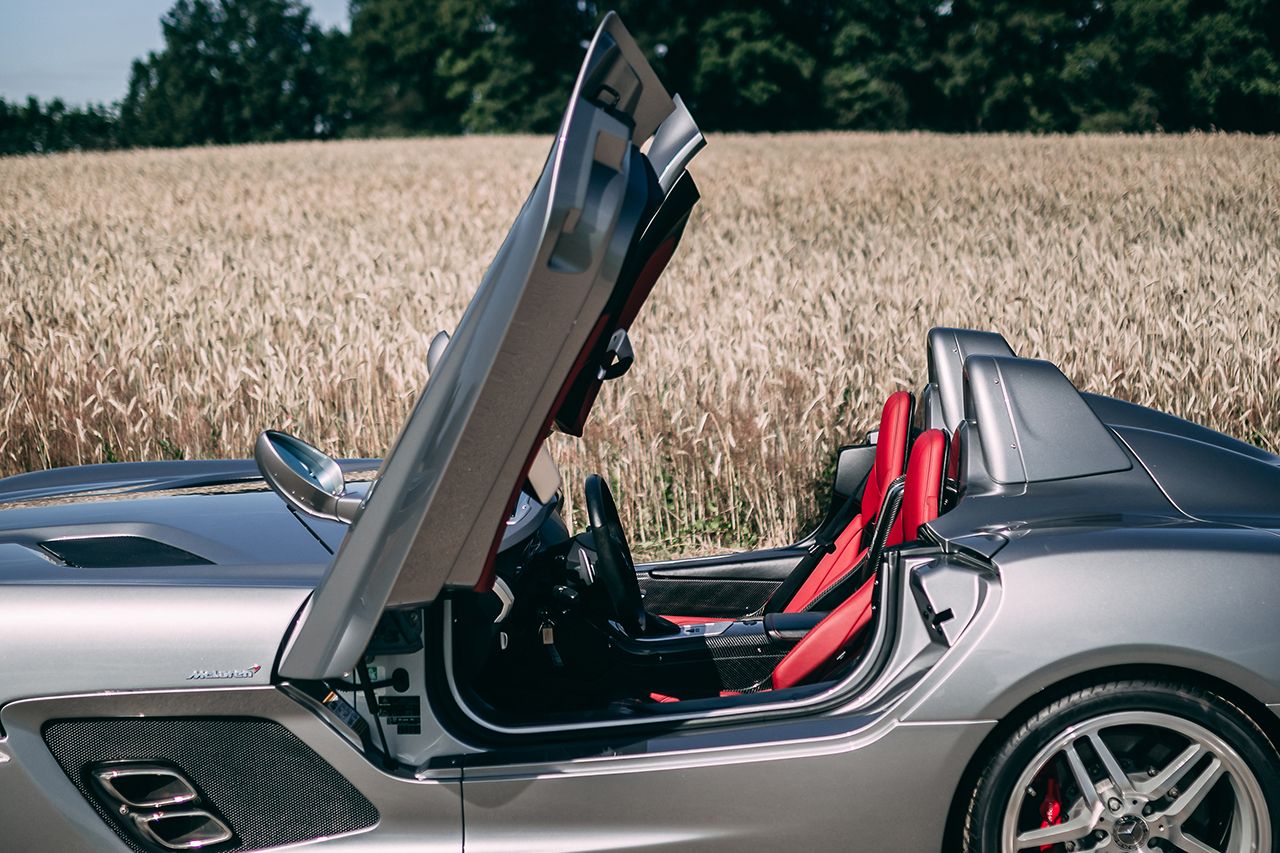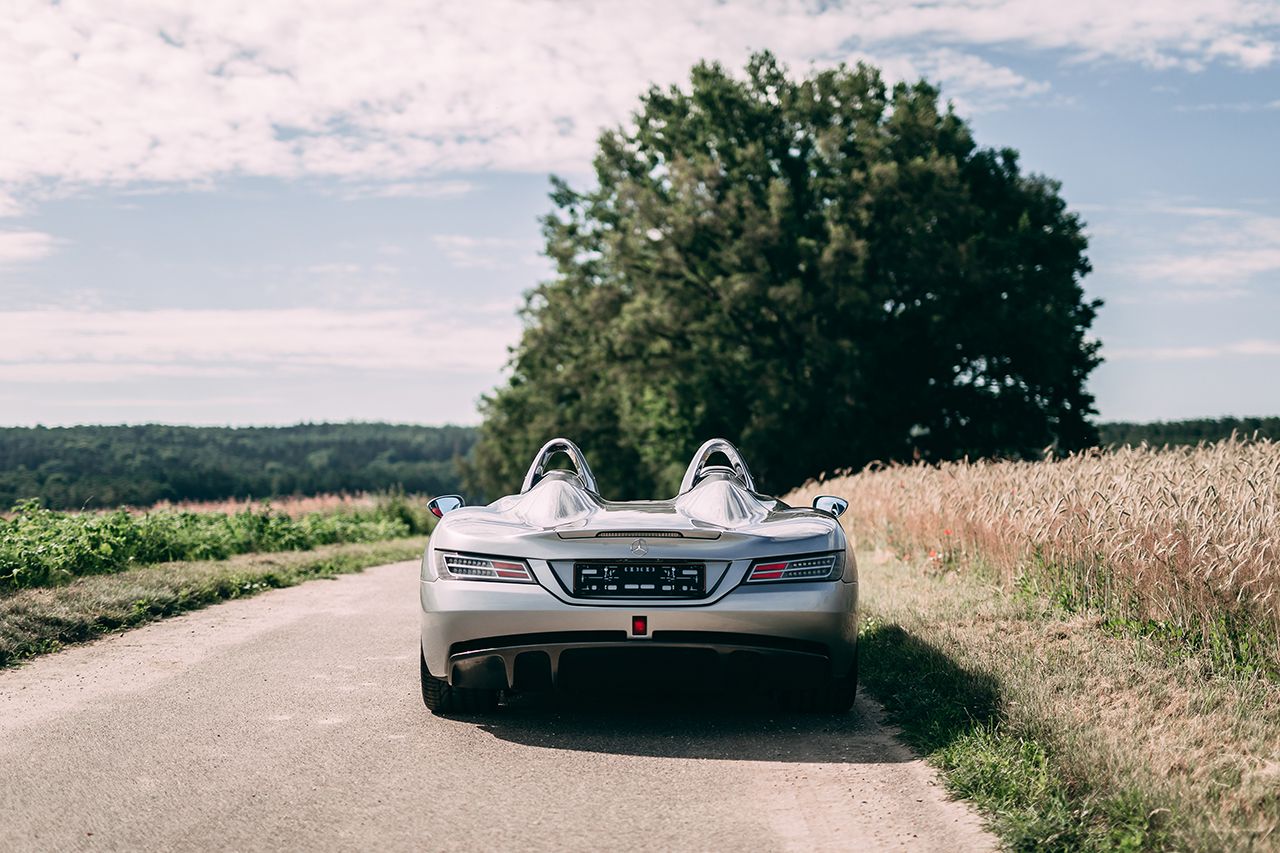Nostalgia is a strong tool in marketing and when you're Mercedes-Benz you've got a huge bank of memories to fall back on, a seemingly endless catalog of legendary models and memorable milestones and otherwise remarkable achievements, some of the more incredible having been achieved in the world of racing.
Among Mercedes' finest days in the sun on the circuits of the world is the day when a journalist accompanied a then-up-and-coming driver to win a road race in Italy. The men were Denis Jenkinson and Stirling Moss and the car was the 300 SLR. 45 years after that victory for the ages in the Mille Miglia, Mercedes-Benz paid tribute to Moss, to Jenks, and to the SLR by building this, the SLR McLaren Stirling Moss.
No windscreen, no worries
"The Mille Miglia was the only race that really frightened me, at least until the moment the flag fell," said the late, great Sir Moss in a 2015 interview.
As one of the few members of the 'old guard' who was always ready to admit that he relished the danger aspect of racing in the '50s or '60s, it may come as a surprise to some that Moss feared anything at all seeing as he was a true trailblazer behind the wheel but, as Moss pointed out, "I could learn the Targa Florio, where I knew how to set the car up for each corner. I couldn’t for the Mille Miglia: you can’t learn 1,000 miles."
Stirling Moss, then aged just 25, wasn't new to the challenge posed by the Mille Miglia, knowing full well how grueling the 10-hour road race is after recording three consecutive retirements in his three previous attempts driving Jaguars prepared by the factory team. For 1955, however, the Britons were no longer handling Moss' car as he decided to join the German Mercedes-Benz team, akin to what Richard Seaman had done almost 20 years before him.
Fangio, known as 'The Master' in the latter part of his career, always stood out for Moss as the ultimate gentleman on and off the track and, while Moss always tried to emulate the Argentine's demeanor in racing, the two walked different paths at the 1955 Mille Miglia.
The Italian event was the third on the World Sports Car Championship's schedule and it was pretty much do or die for Mercedes-Benz in its maiden season of endurance racing after having missed both the opening round in Argentina and the second round at Sebring (where Jaguar won with the D-Type). Over 640 cars filled the entry list of that year's 1,000-mile race but only 533 actually took the start - still a lot when you consider that 150 cars line up for the start of the Nurburgring 24 Hours and that's the most you'll see in any professional long-distance race nowadays.
Mercedes-Benz had the money and could afford to organize pre-race tests on some portions of the course (the racers would dash from Brescia to Rome and back) but this wasn't what helped Moss to win. The up his sleeve was Motor Sport Magazine's continental editor Denis Jenkinson who would act as Moss' co-driver. Jenkinson managed to map out the entirety of the course before the race and came up with some form of pace notes that he inscribed on a roll of paper he would then scroll through during the race. Co-drivers weren't something new at Mille Miglia but, in the past, the co-driver was nothing more than an on-board mechanic or the second designated driver while Jenks' role was that of a modern-dan rally co-driver, something that, according to Moss, wasn't being done at the time.
I mentioned before that Fangio and Moss walked different paths at Mille Miglia and that's because Fangio raced without a co-driver. It showed.
"We certainly had our moments. In the final stage of the race, I was doing up to 180 mph. Only in Italy," pointed out Moss. Indeed, only that day did anyone ever beat Juan-Manuel Fangio by a whopping 32 minutes which is why many say this was not only Moss' greatest drive but the greatest drive by anyone ever in a road race.
"Is it my greatest achievement? Of its type, yes I suppose so. You can’t really compare it with, say, when I won the Monaco GP in 1961," argued Moss when asked about how big of an achievement the '55 victory was. Sure, acknowledgments must also go the way of John Fitch, Mercedes' American driver who finished fifth overall in a street-spec 300 SL and who came up with the idea of having a co-driver in the race to spew out (or, rather, signal) pace notes to him, an idea he passed on to Moss after getting subbed by Mercedes for a place in one of the four 300 SLRs. Also noteworthy was the rugged and fast 300 SLR.
"Not that many cars could win the Mille Miglia - the car needed to be very fast, very strong, with a great organization behind it. So it does take a fairly unique machine. The Mercedes 300 SLR was a large car but it was well suited to the event. It was also reasonably economical… we were getting eight or nine mpg, which at that speed is not bad at all," added Moss.
The higher-ups in Stuttgart probably would have agreed with the Briton since their was the decision, in the late '00s, to greenlight the car you see here, a modern re-interpretation of only the second non-Italian car to ever win the Mille Miglia (the first was also a Merc, coincidentally).
By the time the SLR McLaren Stirling Moss arrived on the scene, one could argue that Mercedes had already milked the Mille Miglia 1955 story for all it had to give with the SLR McLaren 722 Edition that came out in 2007 but, ultimately, it's good that Mercedes thought otherwise. The SLR McLaren was from the very beginning meant as the halo car of the brand with the three-pointed star on the hood of its models so you should look at the Stirling Moss version as the halo car of a halo car.
To add to the insanity, the design was re-thought and there's nothing to protect the heads of the drivers other than two pointy roll hoops. Also, the dihedral doors of the SLR Coupe were carried over for added dramatic effect and maybe the most dramatic thing about the SLR McLaren Stirling Moss was its MSRP: a cool $1 million, in the midst of the economic crisis no less.
And you couldn't buy it by simply waving cash in Mercedes' face. You either had to be a "loyal SLR customer" (which means you had to have bought all the SLRs to come before it) or you had to be some sort of celebrity for Mercedes to take you into consideration. But, once the proud owner of an SLR Stirling Moss, you were in for quite a treat. Besides the obvious lack of roof and everything we've discussed already, there's the weight loss and the enormous power that's always at the ready.
The top speed is supposedly 217 mph but you'd probably lose your head driving that fast. What we do know for a fact is that the V-8 cranks out 641 horsepower and 605 pound-feet of torque.
2009 Mercedes McLaren SLR Stirling Moss specifications
|
Engine |
5.4-liter supercharged V-8 |
|---|---|
|
Horsepower |
641 HP |
|
Torque |
605 LB-FT |
|
0 to 60 mph |
3.5 seconds |
|
Top Speed |
217 mph |
It's rare that you see one of these out in the wild so it's no wonder that RM/Sotheby's expected the car you see here, a fresh example with just under 6,000 miles on the odometer, to sell for about $2.5 million during its online 'European Summer Auction' that ended merely a few days ago. Sadly, this modern Silver Arrow didn't sell.
On the upside, that means it's still up for grabs if you have the economic muscle to get it. If you do, consider it as an investment before anything else because, while we're no fans of garage queens and we champion the idea that cars should be used as intended by their designers, the SLR Stirling Moss truly is the sort of car you'd want to rarely put miles on, a car that will only go up in value as time goes on because there was only one Moss, only one Jenks, and only once did the two combine to conquer the Mille Miglia.

